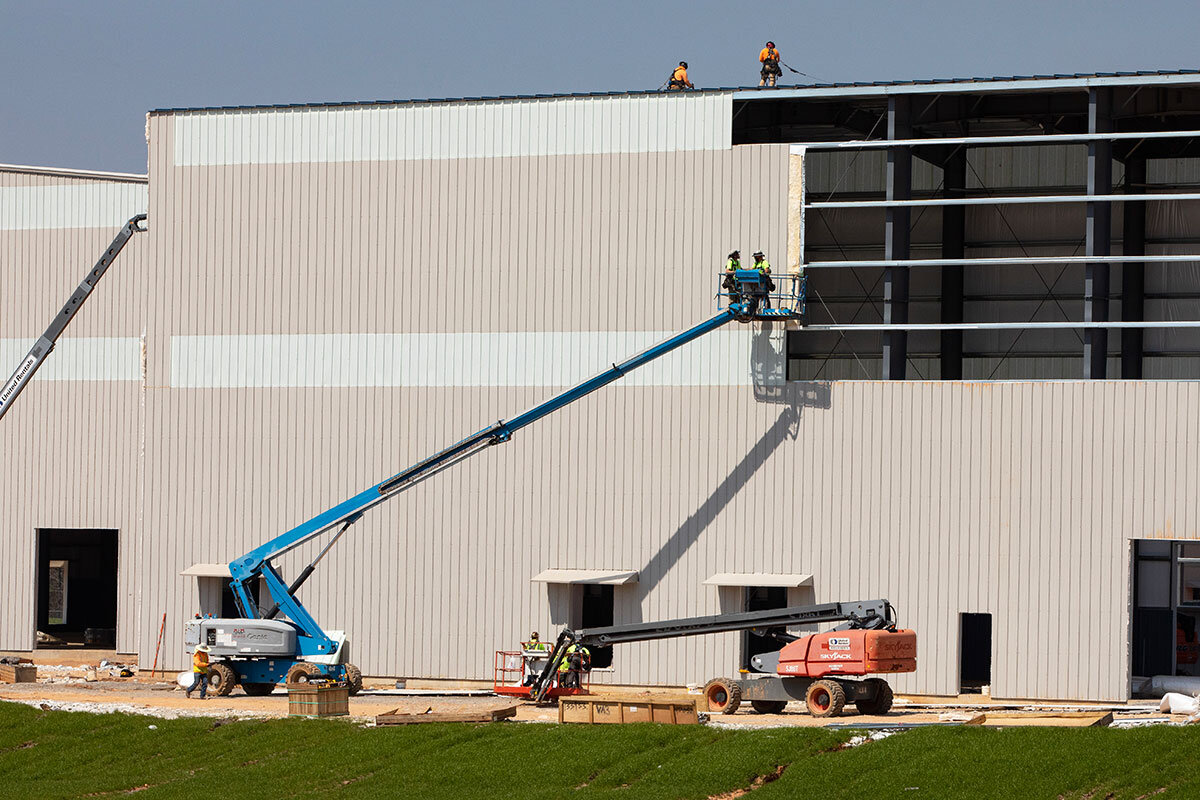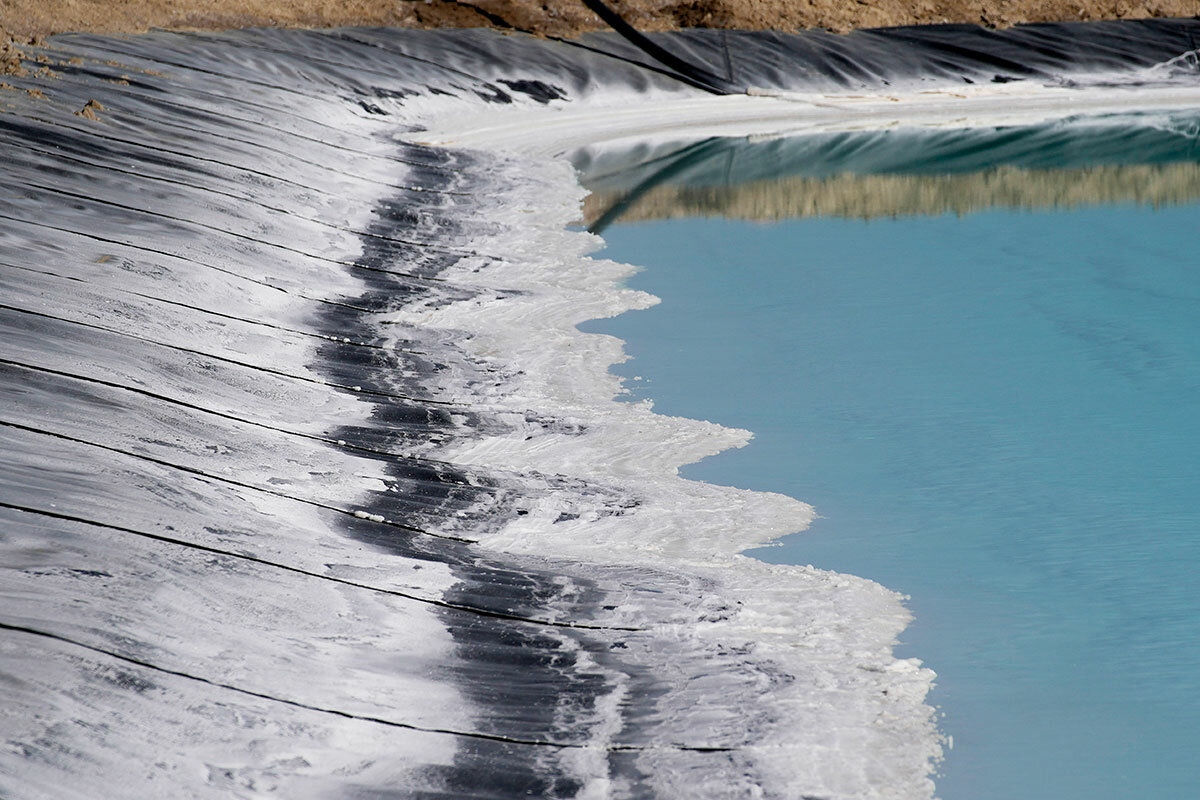Could battery boom change South’s views of green energy?
Loading...
| Kellyton, Ala.
Not long ago, while out scouting for turkey, hunter Jay Shipp came across a strange sight: neatly bulldozed gashes in the forest floor.
“I wasn’t quite sure what I was looking at,” he says. “But then it hit me: That’s the mine!”
The diggings were test pits to peek at a deposit of graphite folded in the Alabama bedrock.
Why We Wrote This
Alabama could be the buckle of a new manufacturing “battery belt” across the South. The economic activity is putting green energy in a new light.
For more than half a century, the United States has outsourced mining and processing of graphite, with China now the largest supplier. Yet here in deeply rural Kellyton, a massive new processing plant is being built to reopen a local mineral deposit known as the Higgins Ferry Group for mining.
The reawakening of a graphite mine in Alabama turns traditional narratives about mining and red-state views of climate change on their heads. It’s the Democratic Biden administration pushing for the mining, with graphite a crucial ingredient in electric car batteries. And Alabamians are welcoming the investment in what is being purported as a green energy project.
It is in part a story about a nation taking control of its clean energy future. As many as 15 planned battery factories – many in impoverished areas of the South – are being called a new American “battery belt” to establish greater industrial independence from China. Kellyton would be its buckle.
Yet the renewed mining also raises many of the same concerns as coal mining or other forms of extraction seen as damaging to the environment. The result is a complex array of questions that could shape key aspects of the climate change debate in new ways.
The Kellyton mine is at “the intersection of changes in the international system – the rise of China ... and the challenges that creates to supply chains – and the effort by the Biden administration to encourage transition to alternative energies,” says Thomas Oatley, a political scientist at Tulane University in New Orleans.
Rising demand
An average electric car battery containsÃ˝100 to 200 pounds of graphite. Graphite demand is expected to , according to aÃ˝British commodity price reporting agency. that demand could increaseÃ˝byÃ˝4,000% in the next decade.
Graphite has been unprofitable to mine in Alabama because its density in the rock is only 3%, compared with 12% of other graphite mines, says Jeffrey Mauk, a researcher with the U.S. Geological Survey, in Denver.
But electric vehicle tax credits included in the Inflation Reduction Act have changed the calculus. The law requires EV batteries to come from local sources or free-trade partners.
China’s threat in 2019 to cut off rare earth minerals to the U.S. defense industry also sharpened the Biden administration’s focus on crucial minerals.
“That got everybody’s attention in the political arena about what critical minerals mean for the security of the nation,” says Dr. Mauk. “That was an important trigger.”
In April, National Security Adviser Jake Sullivan called domestically mined graphite and other minerals “the backbone of the clean energy future.”
Alabamians are on board. Republican Gov. Kay Ivey has touted Alabama’s leadership, and automakers continue to make investments in the state. Mercedes-Benz is already building EV batteries in Tuscaloosa, and Hyundai has announced a $300 million investment to build its all-electric Genesis GV70 SUV at its Montgomery plant.
The same is true elsewhere in the South. A new battery factory near Savannah, Georgia, is expected to offer thousands of high-paying jobs. Upstart EV truck-maker Rivian in 2021 announced plans for a large plant just outside of Atlanta. AndÃ˝BMW last year announced a $1.7 billion investment in EV-related activities in South Carolina.Ã˝Ã˝
“There does seem to be this component of the Inflation Reduction Act that is pushing money into red states as a way of trying to encourage enthusiasm for the economic benefits of a green transition,” says Professor Oatley at Tulane. “In a way, that has undermined the standard Republican line on climate change.”
Boon for the rural South?
Near Kellyton, Alexander City has struggled for more than a decade after a massive textile mill moved abroad in 2013. Part of the area‚Äôs nascent rejuvenation has been tied to upscale development at Lake Martin, a reservoir featuring $1 million lakeside lots. But the graphite mine offers a different promise: SomeÃ˝miners in the state are currently bringing home $130,000 a year. The median income in Alabama is $27,000.
“The mine is a big deal,” says Scott Hardy, a city councilor in Alexander City. “It’s the only place in the U.S. that has this type of process. We have everything set up from the mining of graphite to putting the final piece of the car or truck together.”
Mr. Shipp, the hunter, is also the co-owner of a local roofing company. His firm’s fortunes, he says, tend to rise and fall with the state of the local economy. In that light, while 71% of voters in the county voted for Donald Trump in 2020, “you’d be hard-pressed to find any opposition to the mine,” despite its connection to President Joe Biden, he says.
But even as Democrats and Republicans find some ground for mutual agreement, the new mines do raise thorny environmental questions.
“There is an irony that we are embarking on another environmentally damaging process in order to offset or try to mitigate climate change,” says Professor Oatley. “The notion that it’s clean energy seems a bit inaccurate.”
Some point to potential inconsistencies in the green energy debate. While coal is widely seen as anathema to clean energy, the coal mined in Alabama is far less toxic and is used by the same domestic steel mills needed to build cars that qualify for the EV tax credits.
Historically supporters of unions, Democrats largely ignored a two-year-long coal miner strike in Tuscaloosa. What’s more, environmental risks to water and air quality, including greenhouse gases, are all part of stepped-up industrial production and mining.
“We need to recognize that producing clean energy has its own environmental and social impacts that we need to fix concurrently” with climate change response, mining expert the Massachusetts Institute of Technology’s Climate Portal last year.
Yet a U.S. battery belt is “hard to argue against,” says M.V. “Trey” Hood, a political scientist at the University of Georgia.
“They’re not building a cigarette plant,” he says. “These are good-paying jobs. Some of them don’t require a college degree. At the same time, these are right-to-work states. They have good weather, cheap land, low regulation, low taxes. All those things help attract business.”






